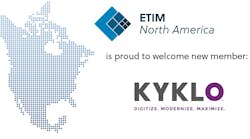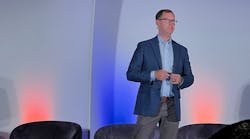Employee training emphasis among electrical distributors is often on the technical know-how employees need to perform their jobs: how to use the company's ERP software, knowing specs on the latest energy-efficient lighting fixture or following the correct stocking procedure in the warehouse. Soft skills such as good communication, adaptability and problem solving are skills human resources personnel may look for when screening applicants. But few electrical distributors cultivate soft skills through formal training after employees are hired. Sure, the sales staff gets trained on the importance of making eye contact, actively listening to customers and wearing a smile, but those skills are probably just about as important for everyone within an organization.
Three years ago, leadership at Van Meter Industrial, Cedar Rapids, Iowa, decided to place an emphasis on soft skills for all of its employees by developing a soft-skills training curriculum. Instead of just emphasizing “selling, selling, selling,” Van Meter's objective was to create an environment where people want to come to work. Rolling out soft-skills training was key.
The electrical distributor launched the training it developed in-house in January 2004. Joel McDermott, training and development manager, manages the curriculum, which includes four classes Van Meter employees take in a classroom setting during the first six month after they are hired. In the first class, employees take a 20-minute behavioral profile test, which is less a test and more a tool to help employees better understand how they respond and behave in various work situations and to evaluate their strengths and weaknesses.
Called the DiSC Profile, each letter stands for a dimension of a person's work personality: dominance, influence, steadiness and conscientiousness.
High Ds (dominance) want immediate results, are quick decision makers and accept challenges. They desire opportunities for advancement, autonomy and new and varied activities.
Someone who scores high on the I (influence) dimension would most likely be described by others as a “people” person. They are great persuaders who naturally make favorable, enthusiastic impressions and enjoy social situations.
High Cs (conscientiousness) put emphasis on quality and accuracy. Diplomatic with people, they think analytically and use systematic approaches to situations or activities.
Those who score high in the S (steadiness) dimension focus on relationships. They're good listeners who create a stable, harmonious work environment. They're sometimes described as the “glue” of an organization.
Everyone possesses certain behavioral aspects from each of the four dimensions. A person's specific combination of the four dimensions results in one of 15 “classic profile” behavior patterns, which include: achiever, agent, appraiser, counselor, creative, developer, inspirational, investigator, objective thinker, perfectionist, persuader, practitioner, promoter, result oriented and specialist.
“We teach employees to understand their behavior in their jobs and what it means in interacting with others — how their behavior impacts and affects their relationships with other people,” said McDermott.
By learning not only about their own personal behavior pattern but also the other 14 possible behavior patterns, employees better learn how to read people and understand better ways to communicate with folks who have different styles of thinking and tackling a problem. The DiSC profile provides a framework for assessing what sort of skills an employee is already good at and where there is need for development.
A chunk of the soft-skills training focuses on conflict resolution. “We teach them to understand the nature of a conflict, that there are two sides to it, how to manage conflict and eventually resolve the conflict,” said McDermott.
By learning about others' work behaviors, Van Meter employees have a set of tools for solving problems and channeling employees with certain skills where they'll best fit.
Improve Your Communication Skills
People with good communication skills are first good listeners. They seek to understand the meaning and message of others.
- Paraphrase what you heard to make sure you understand when you are on the receiving-side of communication.
- Ask questions to clarify with individuals when you're not 100 percent clear on what is expected.
- Ask, “Do you have any questions?” when imparting instructions to direct reports and co-workers. This gives them an opportunity to paraphrase what you've just said.
- After a conversation, follow up with an e-mail in which you summarize the agreed upon plan of action and note who is responsible for what.
- Use positive language. Tell people what can be done instead of what can't.








